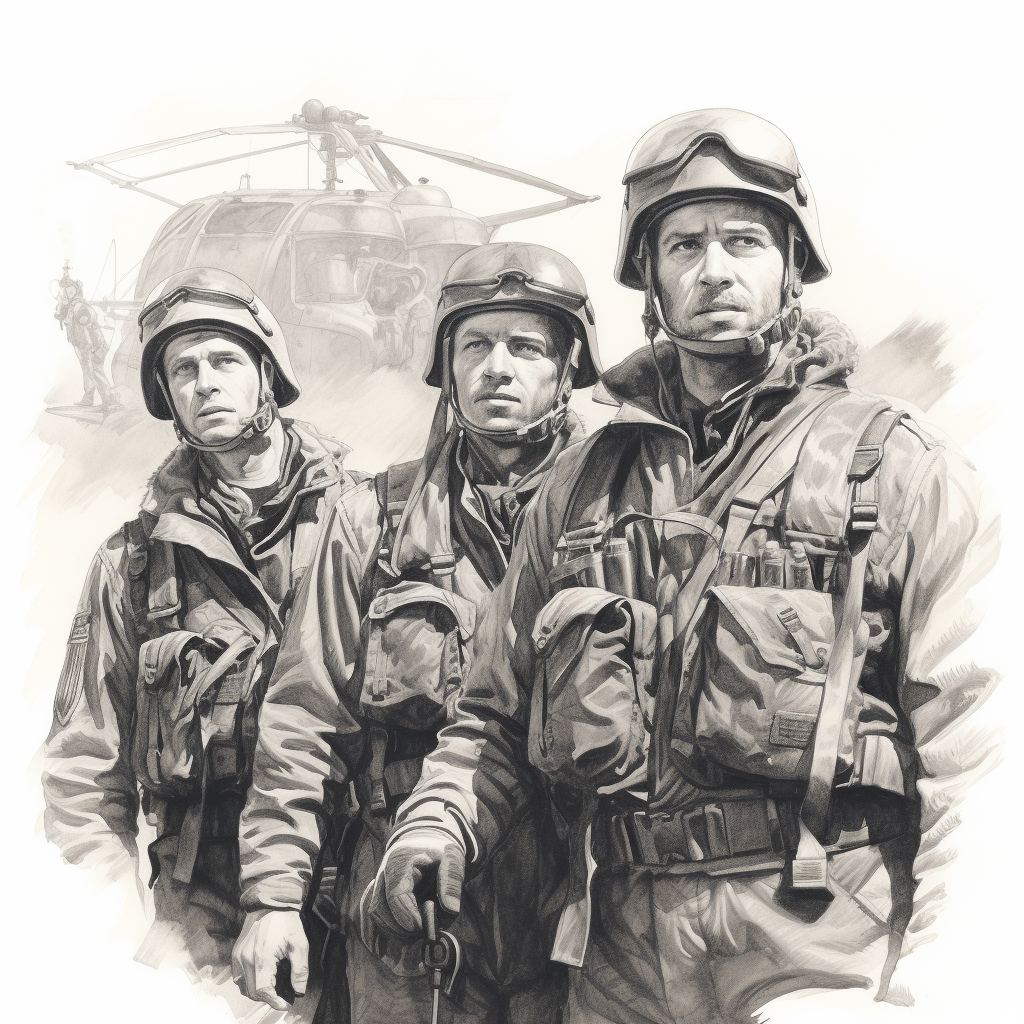Part III: Ground Forces & Airborne Infantry Updates

Ground Forces and Airborne Infantry – The Primary Tool of Russian Hard Power
Like the Soviet Union before it, Russia is a land power first. Despite this fact, GPV 2020 held Ground Forces and VDV (Airborne Forces) as a low priority. This may be due to a perception amongst political leadership that the nuclear triad was Russia’s most important deterrent and that naval forces had the most ground to cover in modernization. It is also true that the bulk of personnel reforms were made in specific regard to Ground Forces. Most development and procurement for Ground Forces was focused on three programs: the Armada main battle tank, the Kurganets tracked IFV, and the Bumerang IFV. They are all under minimalist production while Ground Forces fields them on a limited trial basis. GPV 2020 had planned for the production of 300 main battle tanks, but the military industrial complex has fallen far short of this goal. As the VDV (Russian: Воздушно-десантные войска) is Russia’s premier fighting force and features Russia’s elite infantry divisions, modernizing its equipment was included under procurements for Ground Forces despite being technically a separate service branch. Under GPV 2020, the VDV was also outfitted with the BMD-4M tracked and BTR-MD wheeled infantry fighting vehicles.
Select VDV units and the elite Spetsnaz are also being outfitted with the Ratnik (Russian: Ратник) infantry combat system. At the core of the Ratnik system is an advanced 6Б45 plate carrier vest, equipped with removable Granit (Russian: гранит) plates and Kevlar lining. The plate carrier vest and plates together weigh approximately 7.5kgs (15kgs if side plate inserts and leg plate inserts are included). Several versions of the plate carrier have been released to accommodate basic infantry, paratrooper, and armor personnel configurations. In addition to the 6Б47 helmet, the complete issued system also includes: knee and elbow pads, protective goggles, universal shelter, combat knife, signal lamp, watch, heat source, backpack, water filter, entrenching tool, gas mask, medical kit, and radiological and chemical control gear.
In keeping with the concept of network-centric warfare, Ratnik also connects soldiers to a digital battlefield through the Strelets (Russian: стрельец) communications platform and GLONASS GPS navigation module. Officers access Strelets through a tablet-based tactical computer and can maneuver subordinate elements or individuals, issuing tactical orders, mission directives, or task guidance through the Strelets the user interface (UI). Soldiers receive these instructions through a similar tablet/mobile device UI. Officers and forward observers can also communicate with aircraft and artillery assets to call for fire or close air support.
GPV 2027 was far more generous to the Ground Forces than its predecessor, with Ground Forces and the VDV allocated almost a quarter of all funds. The Ground Forces capabilities focus areas are mobility, deployability (in keeping with “Vnezapnost”), and C4ISR. In addition, ground Forces and VDV procurement will include tactical automated C2 systems (like Ratnik), continued advancements in electronic warfare (EW) capabilities, and modern Intelligence-Surveillance-Reconnaissance (ISR) systems for informing precision fires.
Armored brigades and divisions are expecting to receive modernized main battle tanks. Initial testing on the extremely expensive T-14 Armada Tank revealed inherent design flaws, earning it a reputation as a problem child. Due to its expense and limitations in production capabilities, it is likely that only a brigade at the most will receive final variants of the T-14 Armada. Instead, ground Forces will continue to rely on the venerable T-90M as the workhorse main battle tank.
T-90M is based on the long-standing T-72 design and offers maybe 70% of the T-14 Armada’s capability at a small fraction of the cost. An additional 400 T-90Ms are on order. Offering mid-range capability is the T-72B3M, a modernized version of the T-72 that uses newly installed reactive armor to increase crew survivability. 150 T-72B3Ms were delivered in 2017 alone, with another 450 set to undergo modernization/refit by 2027. Additionally, the less well-known and previously decommissioned T-80BVM is being brought back into service as a cheap option that enables Ground Forces to field additional, albeit expendable, tanks.
Russian Ground Forces will continue to rely on proven and resilient IFV designs. 540 BMP-2 and BMD-2 IFVs will undergo systems and weapons modernization. Like the T-14 Armada, the Kurganets-25 will be produced in small numbers as teething problems are solved, with several variants procured for field testing before a large order is made. Ground Forces will also procure a number of K-16 Boomerang IFVs as well as the BMPT Terminator 2 fire support vehicles, which are currently undergoing field testing in Syria.
If GPV 2027 procurement objectives are met, then the VDV should be able to deploy 1,500 BMD-4M Sadovnits IFVs and 2,500 BTR-MDM Rakushka APCs. Furthermore, having a mobile force allows the VDV to apply the principle “Vnezapnost”.
GPV 2027 is facilitating a full-scale overhaul of Ground Forces artillery components, emphasizing artillery fire solutions, digitized fire direction, and target acquisition through UAVs. Intelligence-Surveillance-Target-Acquisition-Reconnaissance (ISTAR) UAVs are a top priority for artillery brigades. These reforms permit artillery batteries to support a wide range of missions through precision fires and massive bombardment. The Uragan-M1 and Tornado-S multiple launch rocket systems (MLRS) are a centerpiece of this modernization. Also under development is the 2S35 Koalitsiya-SV self-propelled howitzer, which offers improvements over legacy Soviet platforms with automatic fire solutions, fire-control systems, and superior target acquisition.